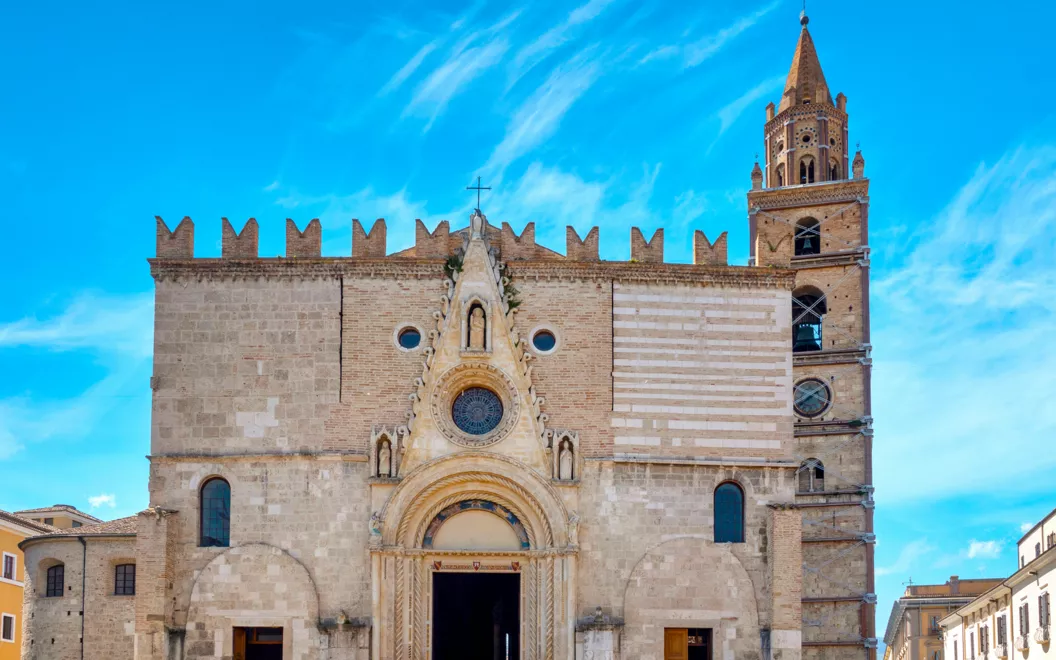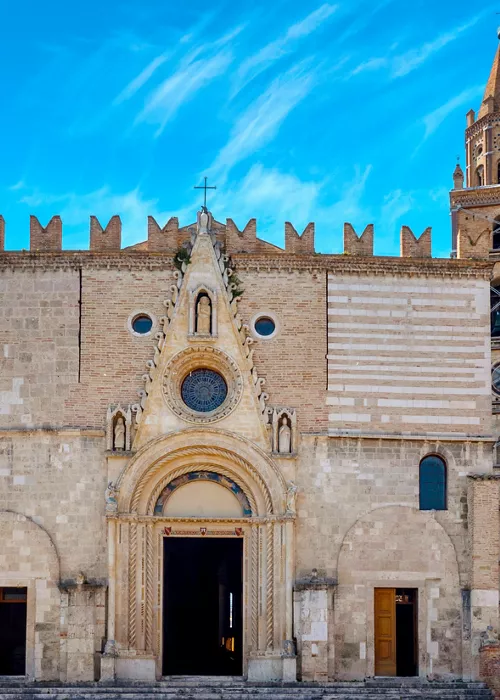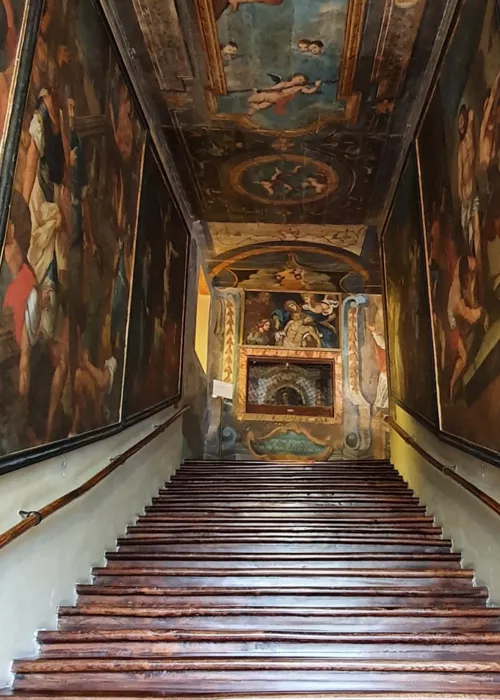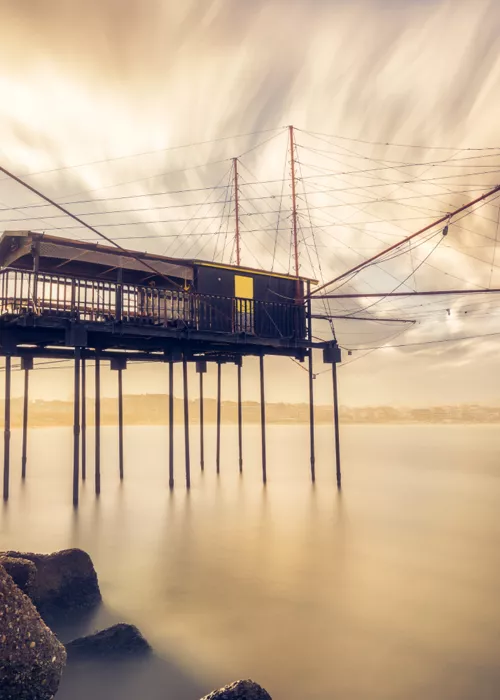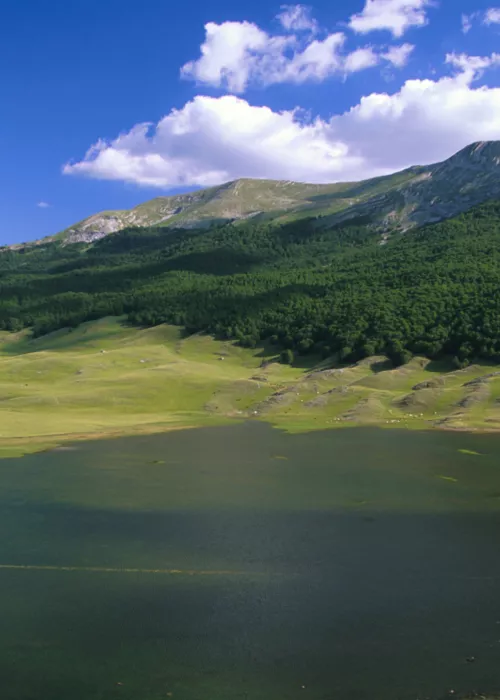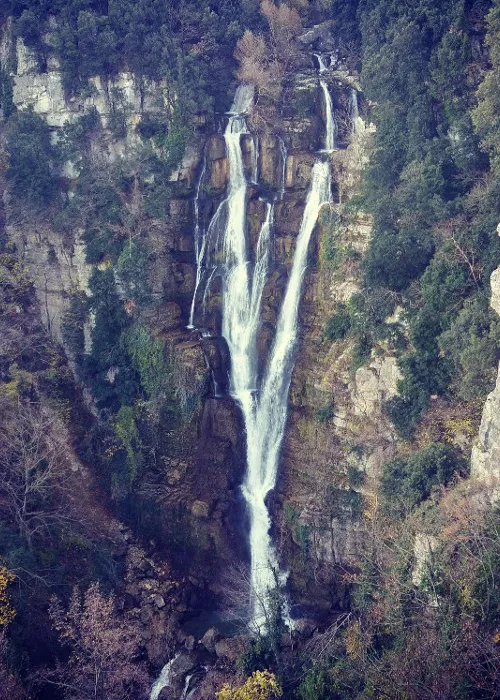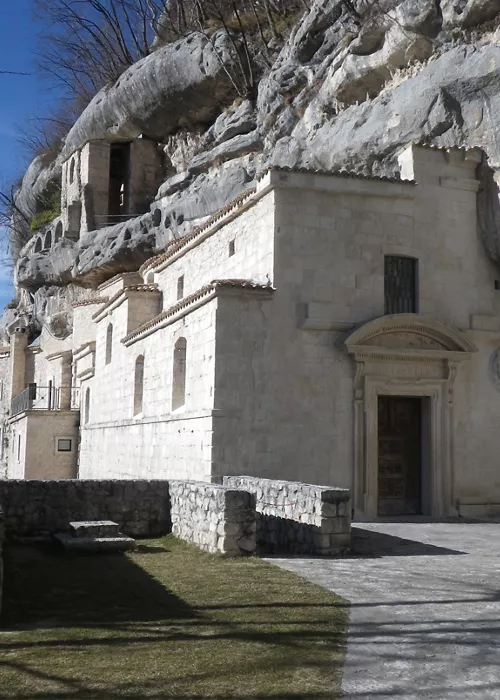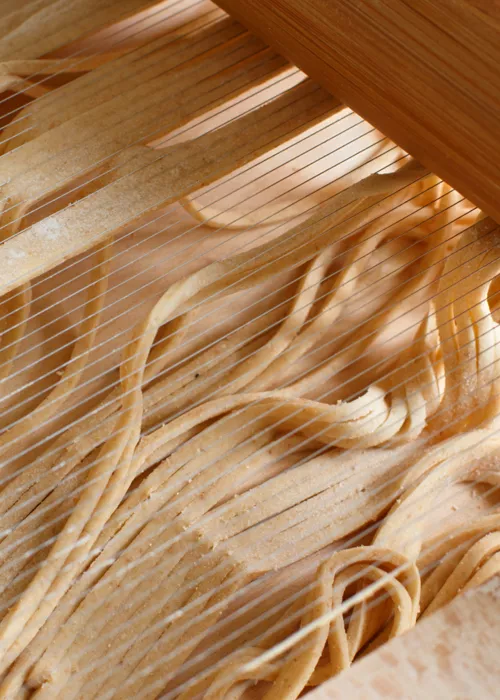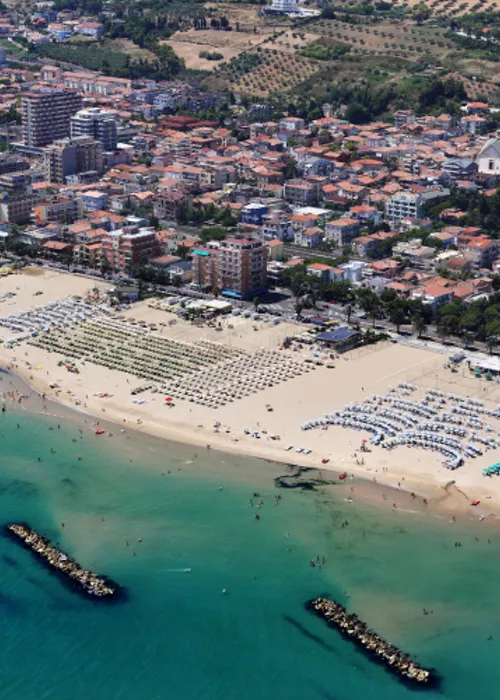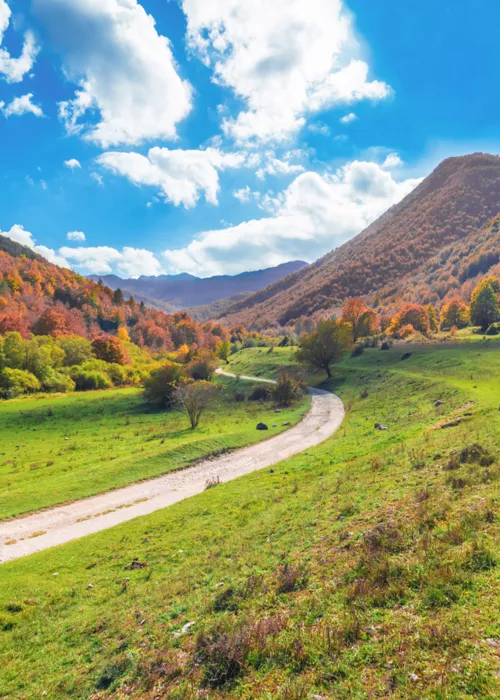Teramo, nature and history intertwined
4 minutes
The evocative natural landscapes intertwine with a rich artistic and cultural heritage to make Teramo the ideal destination for nature lovers who want to travel back in time to discover the people and cultures that have made history in this area since the 8th century BC.
The history and magic of Teramo
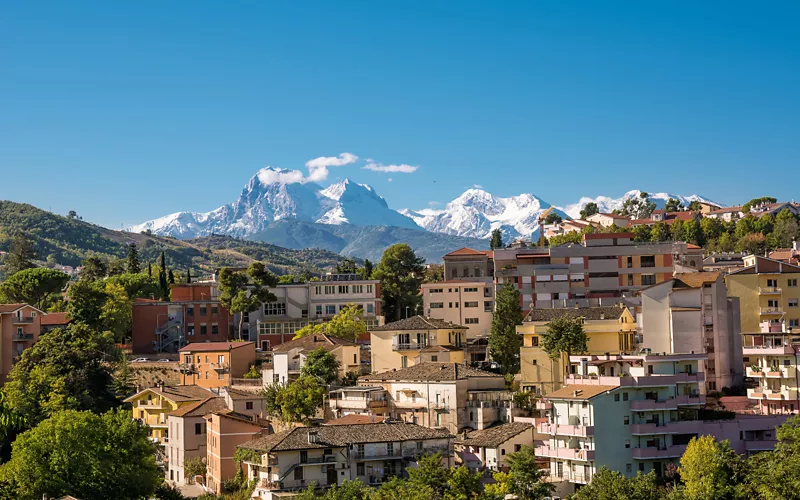
The history of Teramo dates all the way back to ancient times. Before the Romans conquered the area, between the 8th and 5th centuries BC, the Teramo area was known as Aprutium, which is where it’s current name, Abruzzo, derives from. In 449 BC, as the Romans made their way into Etruria, Teramo became embroiled in the Samnite Wars and later in the Italic people’s social warfare against Rome.
The war did not end well for the Italics of Abruzzo, but Rome decided to extend full citizenship to all Italic citizens. Traces of the Roman and Medieval periods can still be spotted throughout the city of Teramo, despite the earthquakes and epidemics that have ravaged the city in subsequent centuries.
What to see in Teramo: 6 unmissable sites
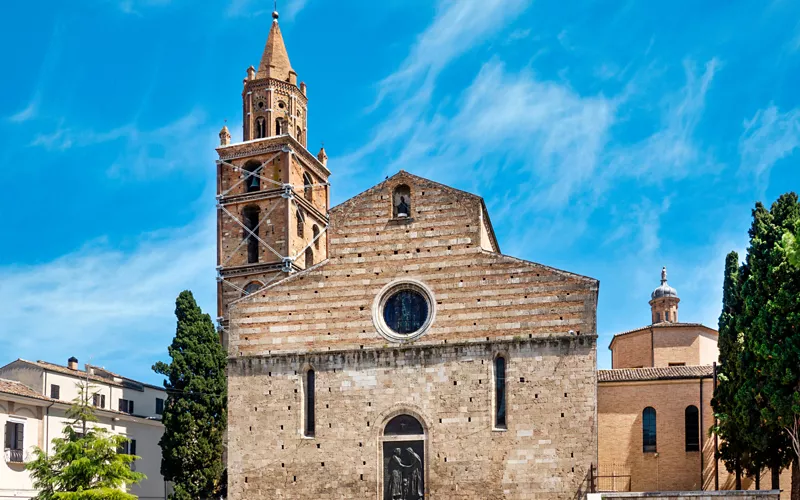
The quaint historic centre of Teramo is surrounded by two waterways, the Tordino river and the Vezzola stream, and can be easily walked around in a day. Choosing what to see in Teramo is easy! Simply stroll through the city's four historic districts for a spellbinding journey through time, among churches, monuments and Roman ruins.
There are some places you definitely can’t miss if you’re visit Teramo for the first time, starting with the Dome of Santa Maria Assunta. Its façade embraces two architectural styles: the upper part an ode to Gothic style and the lower part overtly Romanesque. This alternation of styles also continues inside, where the 13th-century Romanesque stands proudly next to the 14th-century Gothic and the New Sacristy Chapel built in the early 18th century.
The heart of Teramo is Martyrs of freedom square, overlooked by the cathedral and two other historical buildings, the Bishop's Palace, home to the Diocese of Teramo, and Palazzo Costantini.
Less than 200 metres from the square we find the ruins of TRoman theatre, built in the Augustan age and still undergoing excavations that are sure to bring to light other parts of the original structure. A few metres further west are what’s left of the old Roman amphitheatre, with part of the brick perimeter wall still standing.
What to do in Teramo: parks and ancient ruins
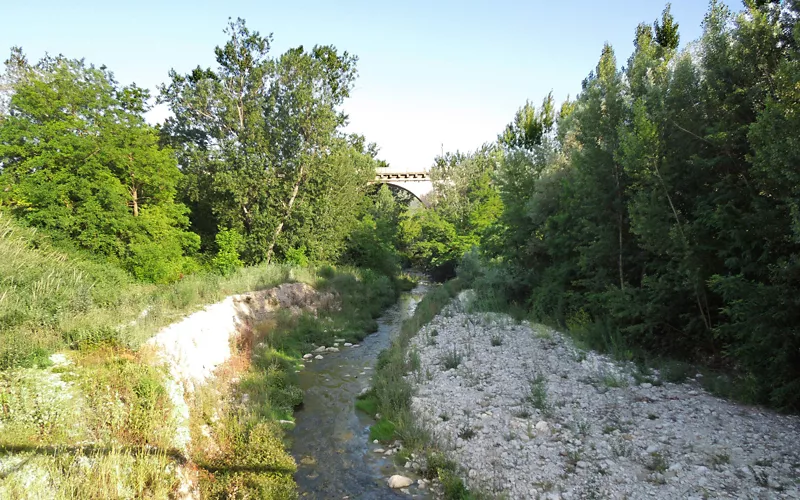
When strolling around Teramo in search of adventure, you’re sure to stumble upon one of the two rivers surrounding the city that, over the centuries, have served as an excellent resource for the local people. The river parks of Tordino and Vezzola run along the two banks of these rivers, providing moments of relaxation and shelter from the sun during the hottest hours of the day. Here you can stroll, play outdoor sports or ride along the cycle path leading to the necropolis and temple of Ponte Messato.
Ivan Graziani Park, dedicated to the late Teramo-born singer-songwriter, is another popular place to relax and enjoy an ice cream. Heading back towards the historic centre, you can take in the sight of the unique Fontana dei Due Leoni (Fountain of the Two Lions) in Piazza Orsini, created by sculptor Pasquale Morganti in the late 19th century to celebrate the expansion of the city's water supply network.
What to eat in Teramo: 6 unmissable dishes

Teramo's culinary tradition draws its aromas and flavours from ancient peasant dishes. We’ve got you covered when it comes to choosing what to eat in Teramo. On chilly days, check out the cardoon in broth, which is also perfect for vegetarians.
At any time of year, however, you face the dilemma between maccheroni alla chitarra with lamb and pork or cannelloni stuffed with mixed meat and Parmesan. For a one-of-a-kind meal, try scrippelle 'mbusse, crespelle in broth, for a delicate flavour but very hearty meal.
To end your dining on a high note, you have to try Sassi d'Abruzzo, a dessert made from toasted almonds, cocoa and cinnamon, and pepatelli, biscuits made with honey and a sprinkling of pepper.
3 unusual places to see in Teramo
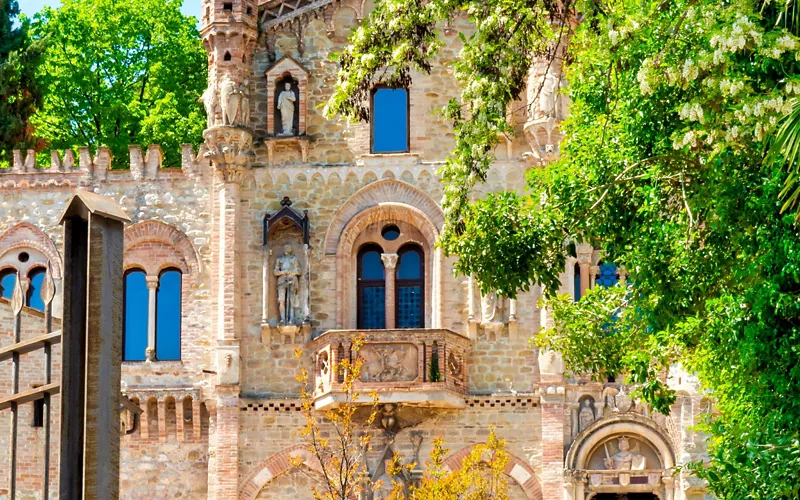
The medieval town of Teramo overlooks the San Venanzio hill and is dominated by the Castle of Monica, designed by Teramo artist Gennaro Della Monica as his private residence in the neo-Gothic style, which was very much in vogue at the time. Work on the castle began in 1889 on the site of the former ancient church of San Venanzio. Completed in 1917, it is now owned by the municipality of Teramo.
Teramo's Torre Bruciata takes you back in time to the 2nd century BC. This Roman bastion built using the opus quadratum technique owes its name (“burned tower”) to the traces left behind by the fire that destroyed the city of Teramo in 1156.
Just a stone's throw away from the tower you can visit the Church of Sant'Anna dei Pompetti, which is what remains of the ancient cathedral of Santa Maria Aprutiensis, also destroyed in the fire set by the Count of Loretello. One thing that did survive and deserves to be admired is a 12th century fresco depicting two angels holding a clypeus with the hand of God giving His blessing.

